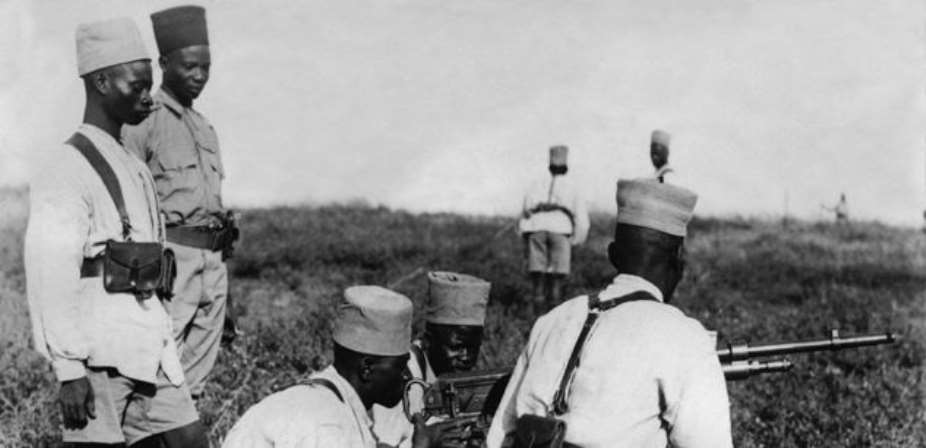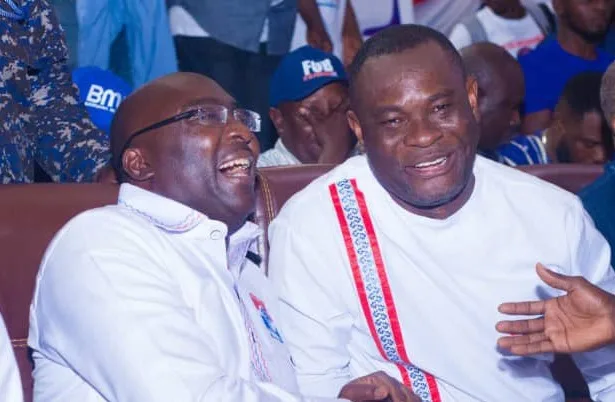The film Tirailleurs by Franco-Senegalese Omar Sy looks back on the history of the Senegalese rifle corps during the Great War (1914-1918). If their commitment, 200,000 men, was indeed significant there, their history covers more than a century and was built on three continents.
If the participation of soldiers from sub-Saharan Africa in the two world wars is often highlighted in films, novels and comics, these men also played a role during the conquest, then the occupation of African spaces and in the repression of independence movements.
This story is therefore complex. The proto-tirailleurs can first be considered as intermediaries who ensure the translation and exchanges within the framework of the counters of Senegal. Over the course of the 19th century, and within the framework of the abolition of slavery, the governor of Senegal, Louis Faidherbe, decided, under pressure from the trading companies of Saint-Louis, a city in northern Senegal, to set up establishes a corps with an exclusively military vocation.
The first battalion of Senegalese skirmishers was therefore created by Napoleon III in July 1857. These 500 men were partly former slaves, whose freedom the army had bought and who owed a service of fourteen years to repay this sum. At first, they are mixed with the white soldiers but tend to focus on chores only, so Faidherbe decides to separate them so that they can focus on their military training. From then on, the Senegalese skirmishers took part in all the missions alongside the French troops.
Battle against Samory Touré
Their first battles took place against the Toucouleur leader El Hadj Omar Tall, under the command of Captain Joseph Gallieni, then Lieutenant-Colonel Gustave Borgnis-Desbordes. Their most emblematic battles in West Africa remain those waged against the founder of the Wassoulou Empire, Samory Touré, whose numbers peaked at 30,000 men, before he was captured on September 29, 1898 by Captain Henri Gouraud in Guémélou, Ivory Coast.
The end of the 19th century and the beginning of the 20th century were marked by their use outside French West Africa (AOF) and French Equatorial Africa (AEF). Madagascar in 1895 and Morocco from 1908 are genuine experiences for supporters of more sustained recourse to Senegalese skirmishers, including on the most distant battlefields. Charles Mangin then appears as one of these partisans and writes La Force noire in 1910. A veritable collection of clichés and errors on the African continent, he defends the idea of a black man whose proximity to nature would have preserved his fighting capacity, while the European man gave in to the comfort of industrialization. African societies would also constitute, according to him and wrongly, a veritable demographic reservoir capable of compensating for the difference with Germany. Indeed, it is not based on any figures and at this time, no precise census has been established.
His work is therefore part of a context of reflection within the circle of colonial officers on the employment of Africans, Malagasy and Indochinese in a broader geographical context. Hubert Lyautey, after having observed them in Morocco, thus considers the Senegalese skirmishers as "seasonal soldiers", whom it is better to avoid mixing with metropolitan troops, because their wintering period, six months during which they are withdrawn from the front (October to April) to protect them from the rigors of winter and train them, engenders jealousies.
Requested in all fights
In any case, the French were the only ones to bring soldiers from sub-Saharan Africa to Europe as early as 1914, which the German authorities strongly condemned. The Senegalese skirmishers were in all the fights in Africa, from Togo to Cameroon, but also in Europe where they distinguished themselves during the recapture of Fort Douaumont in 1916, the defense of Reims in 1918 but also in the Dardanelles from 1915. 200 000 African soldiers therefore participated in the Great War and nearly 22% of them lost their lives in combat but also because of illnesses, in particular lung infections and the Spanish flu.
In the aftermath of the First World War, when the French army had suffered terrible losses and pacifism permeated public opinion, soldiers from the colonies took a particularly important place within the colonial troops and therefore took part in the occupation of the Rhine area, operations in the Levant and the Rif War.
As early as 1937, soldiers from French West Africa (AOF) and French Equatorial Africa (AEF) were foreseen in a potential war against Nazi Germany. In May-June 1940, during the campaign in France, 1,500 to 3,000 of them were massacred by the Wehrmacht, the German army. From then on, their destiny followed the diversity of the French army, some remained in the service of the Vichy army, others were imprisoned in the frontstalags – German army prison camps – and a significant part of France free is made up of soldiers recruited in AEF. They participated in operations in North Africa, the battle of Bir Hakeim and the landing in Provence, but their effort was not recognized since in France,
On December 1, 1944, the massacre of Thiaroye, in a camp located on the outskirts of Dakar, illustrates this tragic history and this abandonment. Their story ends with independence when 60,000 African soldiers are sent to Indochina and 5,000 to Algeria. They then appear as the armed wing of an empire in decline and are despised by the peoples who are fighting for their independence. The body ends between 1958 and 1962, before giving way to a new fight for their just recognition on the memorial level and the payment of pensions.
Anthony Guyon does not work for, consult, own shares in or receive funding from any company or organization that would benefit from this article, and has disclosed no relevant affiliations beyond their academic appointment.
By Anthony Guyon, Associate Researcher at the CRISES laboratory, Paul Valéry University – Montpellier III





 List of 24 ministerial nominees approved by Parliament
List of 24 ministerial nominees approved by Parliament
 You were my inspiration, made me who I am today – Lilian Kumah
You were my inspiration, made me who I am today – Lilian Kumah
 Rainstorm destroys Hohoe E.P. Senior High School building
Rainstorm destroys Hohoe E.P. Senior High School building
 John Kumah strongly supported me to become NPP flagbearer – Bawumia reveals
John Kumah strongly supported me to become NPP flagbearer – Bawumia reveals
 Late John Kumah urged me to run for NPP flagbearer, strongly supported me — Bawu...
Late John Kumah urged me to run for NPP flagbearer, strongly supported me — Bawu...
 Akufo-Addo appoints Joseph Kpemka as Deputy MD of BOST
Akufo-Addo appoints Joseph Kpemka as Deputy MD of BOST
 Ablakwa petitions CHRAJ to investigate sale of SSNIT's hotels to Rock City Hotel
Ablakwa petitions CHRAJ to investigate sale of SSNIT's hotels to Rock City Hotel
 MoF to provide new bailout for defunct Gold Coast Fund investors – Bawumia revea...
MoF to provide new bailout for defunct Gold Coast Fund investors – Bawumia revea...
 OMCs implement price adjustments despite International petroleum price declines
OMCs implement price adjustments despite International petroleum price declines
 Petition to remove Kissi Agyebeng will disrupt operations of OSP – Martin Kpebu
Petition to remove Kissi Agyebeng will disrupt operations of OSP – Martin Kpebu
